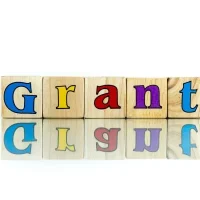Performance indicators form an important part of the proposal as they indicate whether the objectives have achieved meaningful results. Performance indicators help the project team in identifying the quality and level of the result that has been achieved. Performance indicators have been categorized into qualitative; quantitative, process, and result indicators. Quantitative indicators are numerical in nature while qualitative indicators require subjective evaluation. Similarly, process indicators are used to define a process or an activity, while results indicators refer to the indicators that indicate the result achieved from implementing the activity. While identifying the performance indicators keep the following in mind:
- Should be realistic
- Should be simple to use
- Have few meaningful indicators that can be used regularly to assess the project
- Can be used for analysis
- Gives clear indication of the success of the result.
Example:
- Number of women trained in specific skill
- A number of women entrepreneurs who started their own enterprise.
- Number of users of various technologies (communication technology, agricultural technology
- Number of training held
- Attendance of women in various training sessions
- Number of SHGs Formed
- Household income change
Sustainability
To sustain the impacts of any community-based project it is essential that suitable linkages are developed with the local community, government department, and all relevant stakeholders. You should clearly spell out the sustainability measures in your project.
Example: Some ways through which you can ensure sustainability.
- Community Participation: We ensure that the local people actively participate in the entire project so that they own the project rather than considering it as some sort of charity.
- Multi-stakeholder engagement/partnerships: We involve stakeholders which include local CSOs, NGOs and government line departments and develop synergies with them. This helps in enhancing the visibility of the project and also reduces duplication of activities.
- Expanding resource and donor base: We always engage new donors and stakeholders in our programs and we have multiple funding sources, which include membership fees and funding from individuals and institutional grants from donors.
Review and Editing
Read the proposal again and again so that you can reduce occurrence of mistakes. Be sure that the proposal is clear and easy to understand. Have your proposal read by two-three to eliminate all sorts of errors in the text. Many organizations also get their proposals reviewed by a cold reader (a person who was not involved in the project writing). This sort of a review helps you in improving the quality of the proposal. Once all the necessary changes have been incorporated you can submit the proposal to the identified donor agency.








































